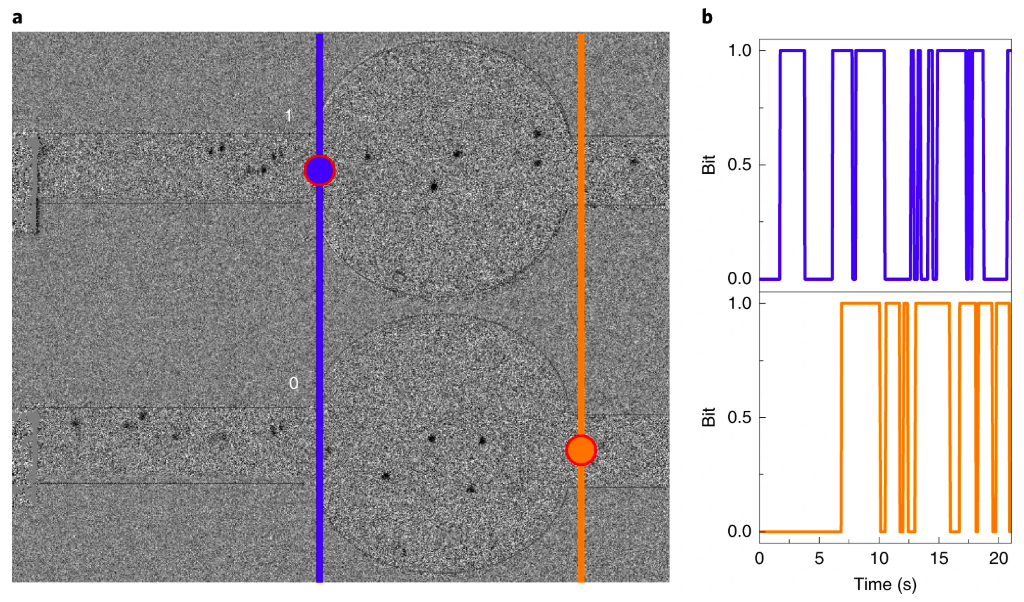
Project C10: Nature Nanotechnology 2019
Thermal skyrmion diffusion used in a reshuffler device
Magnetic skyrmions in thin films can be efficiently displaced with high speed by using spin-transfer torques1,2 and spin–orbit torques3,4,5 at low current densities. Although this favourable combination of properties has raised expectations for using skyrmions in devices6,7, only a few publications have studied the thermal effects on the skyrmion dynamics8,9,10. However, thermally induced skyrmion dynamics can be used for applications11 such as unconventional computing approaches12, as they have been predicted to be useful for probabilistic computing devices13. In our work, we uncover thermal diffusive skyrmion dynamics by a combined experimental and numerical study. We probed the dynamics of magnetic skyrmions in a specially tailored low-pinning multilayer material. The observed thermally excited skyrmion motion dominates the dynamics. Analysing the diffusion as a function of temperature, we found an exponential dependence, which we confirmed by means of numerical simulations. The diffusion of skyrmions was further used in a signal reshuffling device as part of a skyrmion-based probabilistic computing architecture. Owing to its inherent two-dimensional texture, the observation of a diffusive motion of skyrmions in thin-film systems may also yield insights in soft-matter-like characteristics (for example, studies of fluctuation theorems, thermally induced roughening and so on), which thus makes it highly desirable to realize and study thermal effects in experimentally accessible skyrmion systems.
Jakub Zázvorka, Florian Jakobs, Daniel Heinze, Niklas Keil, Sascha Kromin, Samridh Jaiswal, Kai Litzius, Gerhard Jakob, Peter Virnau, Daniele Pinna, Karin Everschor-Sitte, Levente Rózsa, Andreas Donges, Ulrich Nowak, and Mathias Kläui
Nature Nanotechnology (2019)
DOI: 10.1038/s41565-019-0436-8
